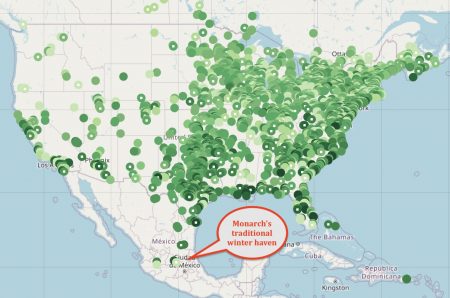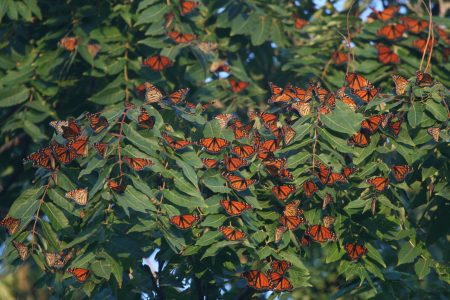Environment
Short Takes
Georgia’s new data center rule increases local controlDecember 1, 2025

By David Pendered
Dec. 2 – Monarch butterflies are slow to arrive at their winter homes in Mexico, and Georgia is asking citizens to count the butterflies they see perched in the Peach State.
The ask comes as federal officials are to announce this month their decision on whether the monarch should be listed as an endangered or threatened species. The population has been declining for 30 years. Reasons include loss of habitat to urban development, as the US Fish and Wildlife Service reported in 2020.

The slow arrival of monarchs in Mexico has affected their formation of colonies in trees west of the capital city, Mexico, Journey North reported Nov. 27. Late November has been the traditional arrival time of arrival for monarchs at their winter homes in central Mexico.
At sanctuaries in Sierra Chincua and El Rosario, guides and government officials are guarding from visitors the butterflies that have landed. Visitors are asked to keep a greater distance from the landing sites and guide ropes are being moved farther from the sites, according to a report by Journey North writer Estela Romero.
In Georgia, the state Department of Natural Resources is asking for volunteers to help chronicle – and report via two web portals – the monarchs who spend the winter in Georgia, as well as across the South in the Carolinas, Florida, Alabama, Mississippi, Louisiana and Texas.
DNR described the important role of citizen scientists in tracking monarchs. Their findings have helped scientists understand how and why “some monarchs breed throughout the winter in the southern U.S. Scattered reports suggest that some monarchs can overwinter in coastal regions in a non-breeding state, similar to their wintering behavior in Mexico.”
Here’s information on how to submit information about monarchs in the winter:
At https://journeynorth.org/reg
At https://www.inaturalist.org

0